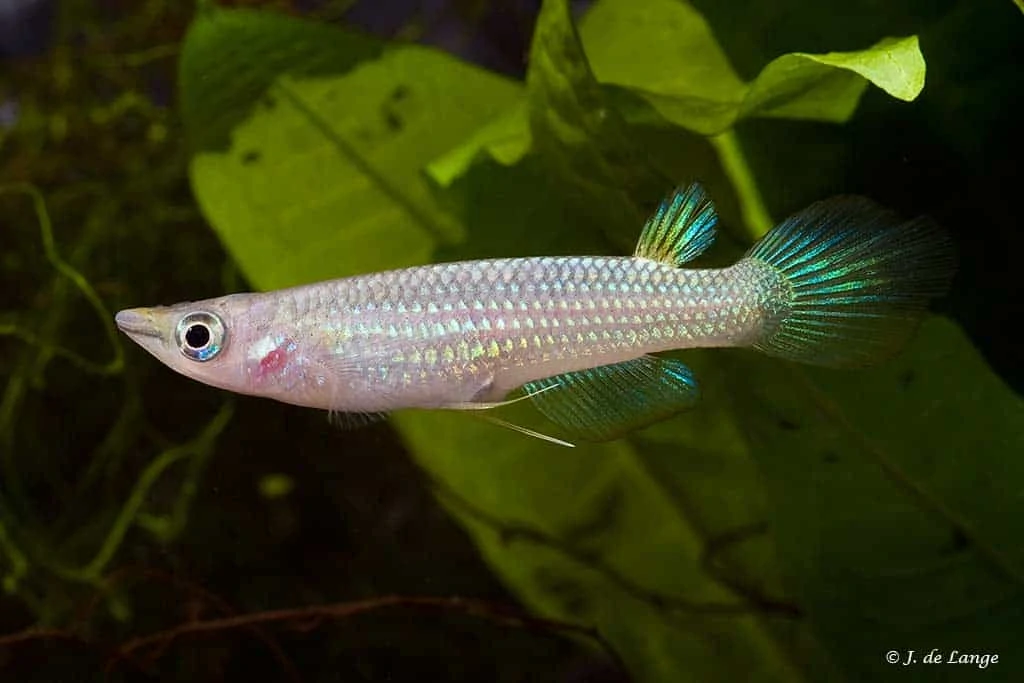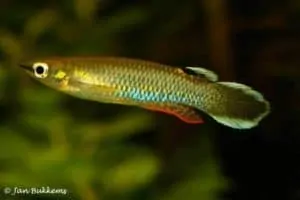Aplocheilus lineatus
The body of Aplocheilus lineatus is elongated and torpedo-shaped. Ground color highly dependent on the diverse areas of discovery. Back brown green, body parts lighter, belly yellowish. Almost every scale is decorated with a green to gold shiny dot, which evokes a longitudinal stripe pattern. The abdomen and the part above the anal fin are covered with red iridescent dots. On the flanks and caudal fin base 6 – 8 dark transverse bands. Over the gill covers lies a yellow-green to blue-green sheen. Dorsal fin yellow with red overtone, caudal fin orange at the base, the rest red with an alternating dark-light pigment ring in the lobes. Anal fin at the base yellow-green to bluish with bright spot markings, the rest red. Pectoral and pelvic fins yellowish, often with red edges.
Size: max. 10 cm.
The females: generally darker. The transverse bands are more numerous and wider and therefore more conspicuous. Dorsal fin with dark spot at base.
Natural habitat
India, Ceylon. Aplocheilus lineatus lives in shallow, stagnant and slow-moving waters with dense vegetation of overhanging grasses and riparian vegetation.
Care
Aplocheilus lineatus is suitable for large aquariums and should only be kept together with larger fish, with a dense border planting here and there and sufficient floating plants on the surface. Soil preferably dark. Whimsical driftwood lends itself perfectly as decorative material. Populate the upper and middle water layers. Like related species, they are predatory. Few requirements are set for the water quality. Temperature 22-24 degrees Celsius. Best kept as a pair or one male with several females. In fact, only live food animals are considered as food, but dry food is also taken for variety.
Breeding Aplocheilus lineatus
Cultivating Aplocheilus lineatus is not difficult. These killifish also reproduce in community aquariums, but to achieve this the temperature must be raised to about 28 degrees Celsius. The firm egg shell makes it possible to remove the eggs from the plants and transfer them to breeding shells. The young hatch after approx. 12-14 days and are easy to rear with the usual rearing foods.
Video
Author
Bianca
Copyright images
John de Lange
Sita de Lange

















Reviews
There are no reviews yet.